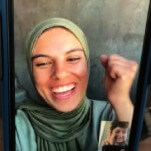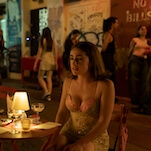Girlhood

Even after The Execution Of Wanda Jean, The Nazi Officer's Wife, and The Farm: Angola, USA, documentarian Liz Garbus is still finding depths to plumb in the topic of human captivity. Her fourth film, Girlhood, opens at a clean, well-run Maryland juvenile-detention center, where delinquent teenage girls sit through classes to learn how to make "positive choices." They examine artists' renderings of "clean" and "scummy" people and are asked to point out the difference, a task they're reluctant to perform, since the "scum" looks like their friends back home. The atmosphere is like an off-kilter church youth-group lock-in, but Girlhood seems to argue that for all its innocuousness, the grind of institutional life suits these girls, who are better off disconnected from turbulent families and the violence that landed them behind bars. Garbus follows two girls in particular over the course of three years. While her mother was in jail for prostitution and drug possession, bright-eyed, feisty Megan wounded a girl with a box-cutter. Megan is released when her mother is, but the two women have a relationship based on blame and guilt: They're both drowning, they both refuse to help each other, and neither has anyone from the state tracking her progress. Sweet, bubbly Shanae, on the other hand, has been incarcerated for almost four years for stabbing a girl to death when she was 12 (part of a disastrous preteen bad-girl phase that included drug abuse and a brutal gang rape), but her mother has been by her side throughout, and wants what's best even if it means keeping Shanae locked up. Crime at the juvenile level is so inexplicable that it makes all crime look random, sad, and unfair to everyone concerned, and much of Girlhood deals with the incongruity between what these girls did and how they behave now. "They're looking at me as a cold-blooded murderer, instead of the person I am inside," Shanae says at the beginning of the movie, and both she and Megan do seem like typical teens, overacting when the camera's on them and displaying a natural streak of youthful defiance when they shrug off the contrition their jailers expect. Garbus tells their story in her functional, minimalist style, employing a few intertitles between a seamless blend of first-person interviews and Frederick Wiseman-esque moments in time. Her skill as a documentarian derives from the way she refuses to position her subjects as representative of some larger problem–instead, she deals with them as individuals in a specific kind of trouble. Garbus knows how to catch people at their most open, as they define their own types and simultaneously transcend them.








































